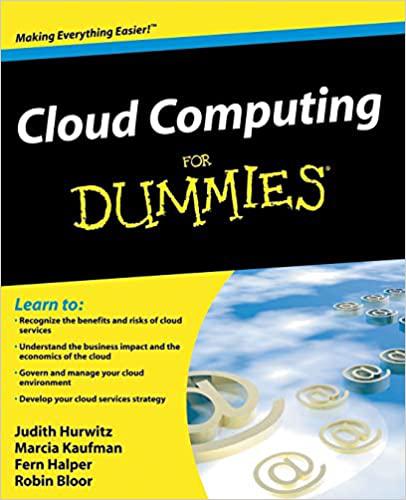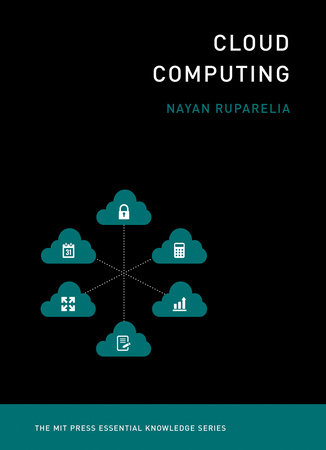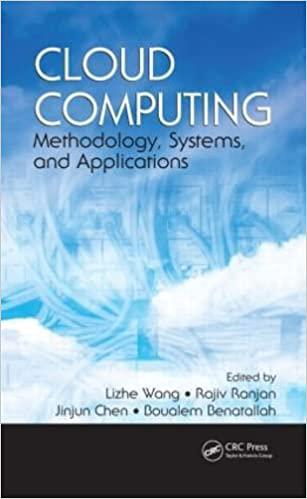
The digital age has ushered in a new era of computing, and at the core of this transformation is cloud computing. Whether you're sending emails, streaming videos, or running a global enterprise, there are high possibilities you're already benefiting from the power of the cloud. For those venturing into the dynamic field of cloud computing or striving to sharpen their expertise, the right book can be an invaluable guide. I have benefitted from many books that throw light on the fundamentals of cloud computing, making the dynamic field of cloud computing interpretable and accessible.
This article is your guide to the finest cloud computing books, carefully curated to direct both beginners and seasoned individuals in the field. Read on to explore these literary companions that illustrate the fascinating cloud technology domain in the best way possible.
What is Cloud Computing?
Cloud computing technology refers to the use of remote servers hosted on the internet to store, manage, and process data and applications rather than relying on local computing resources or on-premises servers.
How Does Cloud Computing Work?
Cloud computing works by providing access to various computing resources and services over the Internet:
Cloud computing operates by granting instant access to a shared pool of computing resources via the internet. Here's a simplified breakdown of its functioning:
Virtualization: Cloud providers employ virtualization to create virtual instances of physical hardware, allowing multiple virtual servers to run on one physical server.
Data Centers: Cloud providers maintain vast data centers worldwide, served with servers, storage, and networking equipment, ensuring reliability and low-latency access.
Service Models:
IaaS: Users rent virtualized hardware resources like virtual machines, storage, and networks, with control over software configurations.
PaaS: Users develop, run, and manage applications without worrying about infrastructure, as the provider handles the underlying components.
SaaS: Users access software applications directly through the internet without managing the underlying infrastructure or software.
Deployment Models:
Public Cloud: Resources owned by third-party providers are accessible to the public online.
Private Cloud: Resources exclusively serve a single organization, hosted either on-site or by a third party.
Hybrid Cloud: Combines public and private resources, facilitating data and application sharing.
Community Cloud: Shared by multiple organizations with common concerns, such as security or compliance.
User Interaction: Users access cloud resources through web browsers, command-line interfaces, or dedicated software applications provided by the cloud provider.
Scalability: Cloud services are highly scalable. Users can modify resources to meet demand, optimize performance, and control costs.
Pay-as-You-Go: Cloud services operate on a pay-as-you-go or subscription basis, with users paying only for the resources they consume, eliminating upfront investments.
Security and Compliance: Robust security measures, data encryption, and access controls help safeguard user data and ensure adherence to regulations.
Maintenance and Updates: Cloud providers manage routine maintenance, updates, and patches for infrastructure, reducing user burdens.
Aspiring to enter the field of cloud computing or aiming to advance your career, learning from an esteemed e-learning provider is a strategic move. KnowledgeHut's cloud computing course learning path
is a well-structured program to familiarize students with a deep knowledge of cloud technologies. Starting with foundational concepts, it progresses to cover advanced cloud architecture, security, and optimization topics. Practical exercises and hands-on labs provide valuable experience in implementing cloud solutions to make learners well-prepared for real-world scenarios.
Best Cloud Computing Books for Beginners
Dive into the fundamentals of cloud technology with these finest beginner-friendly books.
"Explain the Cloud Like I’m 10" by Todd Hoff
Overview: Todd Hoff's book takes a unique approach to demystifying cloud computing by presenting complex concepts in a way that even a 10-year-old can grasp. It employs simple language, analogies, and relatable examples to break down the cloud's intricacies.

Topics Covered:
The book introduces readers to the fundamental concept of cloud computing and its significance in the modern world.
Covers essential cloud terminology and concepts for readers to understand key terms like servers, data centers, and virtualization.
Readers learn about the mechanics of cloud computing, including data storage, accessibility, and scalability.
Highlights the advantages of cloud computing, such as cost-efficiency, accessibility, and flexibility.
"The Basics of Cloud Computing: Understanding the Fundamentals of Cloud Computing in Theory and Practice" by Derrick Rountree and Ileana Castrillo
Overview: Derrick Rountree and Ileana Castrillo provide a comprehensive introduction to cloud computing for beginners and those seeking deeper insights. The book covers a wide range of topics, from theory to real-world applications.
Topics Covered:
The authors explain the different service models, including Infrastructure as a Service (IaaS), Platform as a Service (PaaS), and Software as a Service (SaaS).
Readers gain an understanding of cloud deployment options, including public, private, and hybrid clouds.
It delves into cloud security considerations, risks, and best practices for safeguarding data in the cloud.
Compliance requirements and governance frameworks for cloud environments are covered.
Case studies and real-world examples illustrate how organizations are benefiting from cloud computing.
"Cloud Computing for Dummies" by Judith S. Hurwitz, Robin Bloor, and Marcia Kaufman
Overview: As part of the renowned "For Dummies" series, this book provides a beginner-friendly introduction to cloud computing. It offers clear explanations, practical insights, and guidance for individuals and businesses.
Topics Covered:
Different cloud deployment models (public, private, hybrid) and service models (IaaS, PaaS, SaaS) are covered.
Learn about the advantages and potential challenges of adopting cloud technology in this book.
Guidance on how to plan, implement, and manage cloud solutions, including migration strategies, is offered.
It discusses cloud security practices and compliance considerations.
An overview of major cloud providers and their offerings is available.
"AWS: The Complete Beginner’s Guide" by Byron Francis
Overview: Byron Francis's book is for beginners looking to dive into Amazon Web Services (AWS), one of the leading cloud providers. It focuses on the basics of AWS services and how to get started.
Topics Covered:
Introduction to AWS and its core services, helping readers become familiar with the AWS ecosystem is a key learning.
It guides readers through the process of setting up and configuring AWS resources for various use cases.
It gives practical examples and exercises, allowing beginners to gain hands-on experience with AWS.
It offers tips for cost management and security best practices within the AWS environment.
"Cloud Computing: A Hands-On Approach" by Arshdeep Bahga and Vijay Madisetti
Overview: This book adopts a hands-on approach to cloud computing, providing practical exercises and real-world examples. It is suitable for readers who want to gain a deeper understanding of cloud technologies through hands-on experience.
Topics Covered:
The book explores cloud computing architectures, technologies, and their applications.
It allows readers to understand how hands-on labs work and discusses practical exercises designed for cloud platforms like AWS and Google Cloud.
It presents real-world applications and use cases, including the development of cloud-based mobile apps.
It addresses cloud security and privacy considerations.
The book discusses emerging trends and future directions in the field of cloud computing.
Best Cloud Computing Books for Experienced
Explore unparalleled cloud expertise through the top collection of cloud computing books, where expert-level insights and innovation await your discovery.
"Cloud Computing: Concepts, Technology & Architecture" by Thomas Erl, Ricardo Puttini, and Zaigham Mahmood
Overview: This book is a comprehensive resource that delves deep into cloud computing concepts, technologies, and architectures. It is for professionals with prior cloud experience looking to expand their knowledge and expertise.

Topics Covered:
In-depth coverage of cloud service models (IaaS, PaaS, SaaS) and deployment models (public, private, hybrid).
Architectural patterns and best practices for designing cloud solutions.
Cloud security, governance, and compliance.
Case studies and real-world examples.
“Cloud Computing Patterns: Fundamentals to Design, Build, and Manage Cloud Applications" by Christoph Fehling and Frank Leymann
Overview: It is a valuable resource for cloud professionals, offering insights into cloud-native application development, real-world use cases, vendor selection, and practical guidance. It caters to a diverse audience, from beginners seeking an introduction to cloud computing patterns to experienced practitioners looking for actionable advice.
Topics Covered:
Cloud computing pattern fundamentals.
Real-life applications and use cases.
Selecting suitable cloud vendors.
Architectural patterns for cloud applications.
Design principles and best practices.
Building cloud services and APIs.
Cloud resource management.
Security considerations.
Deployment and operations.
Scalability, resilience, and cost management in cloud applications.
"Cloud Computing: Theory and Practice" by Dan C. Marinescu
Overview: "Cloud Computing: Theory and Practice" by Dan C. Marinescu is an extensive resource that provides a deep exploration of network-centric computing, with a primary focus on cloud computing. It is best for students and IT professionals to get an all-around understanding of cloud technology.
Topics Covered:
It introduces readers to the fundamental principles of cloud computing.
The book explores advanced concepts such as concurrency, parallel processing, and distributed systems, enhancing the reader's understanding of the underlying technologies of cloud computing.
Insights into various cloud applications and services hosted in the cloud are shared.
The importance of cloud security is discussed, and guidance on safeguarding data and resources within cloud environments is given.
Emerging research areas within cloud computing are discussed.
Numerous cloud computing projects discussed in this book enable readers to apply their knowledge in hands-on scenarios.
References to the latest advancements and research in cloud computing and related domains are given.
"Cloud Computing: A Practical Approach" by Anthony T. Velte, Toby J. Velte, and Robert Elsenpeter
Overview: It is a comprehensive guide that offers a pragmatic look at the rapidly evolving landscape of cloud computing. This book provides insights, practical advice, and real-world examples to help businesses navigate the transition from conventional network infrastructure to advanced cloud solutions.
Topics Covered:
Economic implications of cloud computing
Critical aspects of cloud security are covered, addressing concerns, and best practices for safeguarding data and resources in the cloud are discussed.
Regulatory and compliance considerations to navigate the legal landscape of cloud computing.
Insights into prominent cloud service providers, including Amazon, Google, Yahoo, Microsoft, IBM, EMC/VMware, and others, with the services they offer.
Services, and storage, hardware, clients, infrastructure, platforms, and applications.
HTTP, XMPP, HTML, OpenID, DHTML, and SSL.
Software plus Services (S S), Custom application development environments, Platform as a Service (PaaS), Software as a Service (SaaS), and solutions tailored for the cloud.
Thin clients, local clouds,, and virtualization technologies
How to migrate to the cloud—emerging standards and best practices for a seamless transition.
Conclusion
Cloud computing has evolved from a nice-to-have technology to an indispensable one with even greater potential on the horizon. All IT professionals must become well-versed in cloud computing to advance in the field, and the suggested books in the article are excellent resources for building that essential foundation. So, pick up a book and commence your voyage into the promising realm of cloud computing.

FAQs
What are the 4 pillars of cloud computing?
The 4 pillars of cloud computing, often referred to as the “NIST Cloud Computing Reference Architecture”, are foundational elements that define cloud services. They are:
Resource Pooling
On-Demand Self-Service
Broad Network Access
Rapid Elasticity
Which is the best source to learn cloud computing?
The best sources to learn cloud computing are official cloud provider documentation, online learning platforms, certification programs, books, online communities, hands-on practice, YouTube tutorials, and local cloud user groups.
What is 5 3 4 in cloud computing?
5 3 4 in cloud computing is the concept of the 5 essential characteristics, 3 service models, and 4 deployment models to make cloud technology compelling and revolutionary.
What are the 6 principles of cloud computing?
The six Principles of Cloud Computing are:
Service Models (IaaS, PaaS, SaaS)
Deployment Models (Public, Private, Hybrid)
Scalability
Pay-as-You-Go Pricing
Security
Interoperability
These principles define cloud computing foundations.



